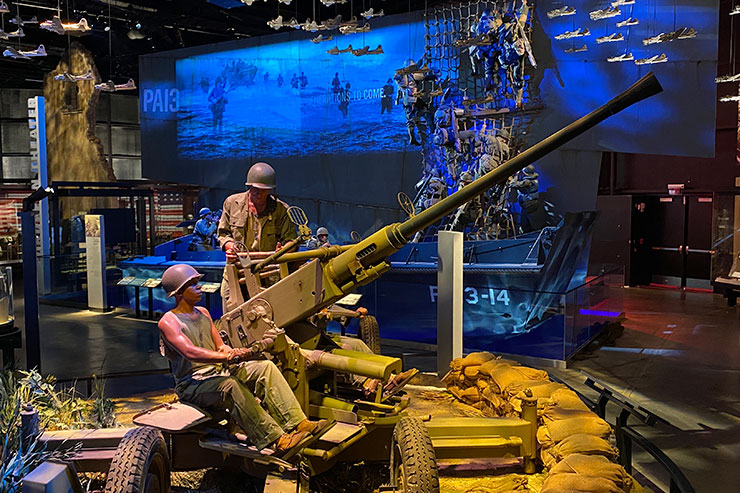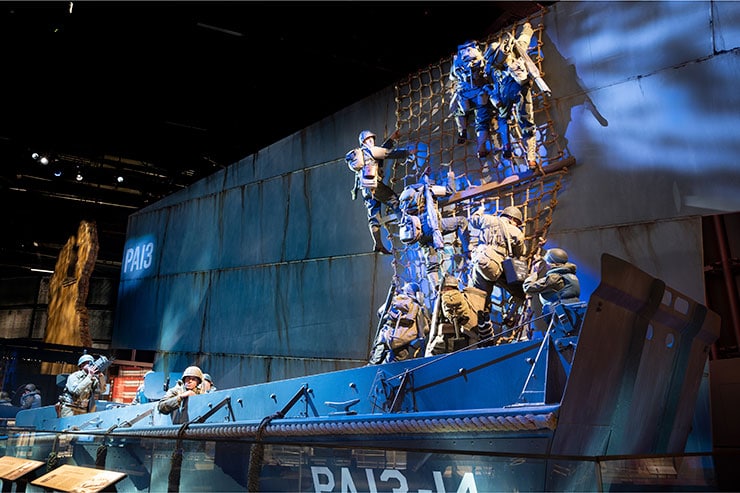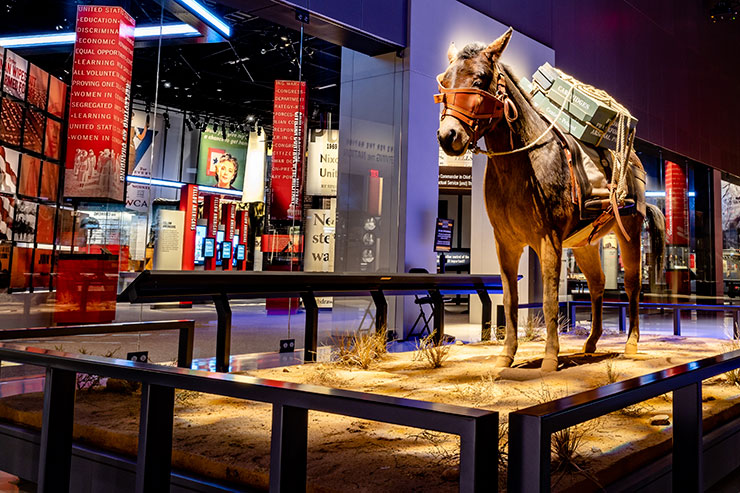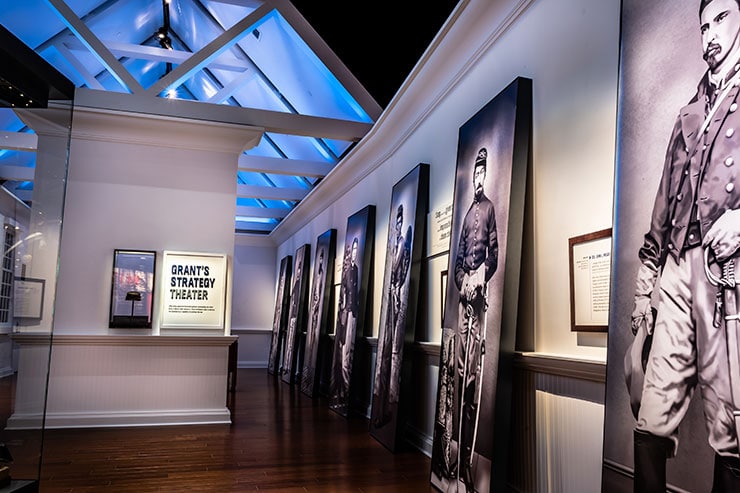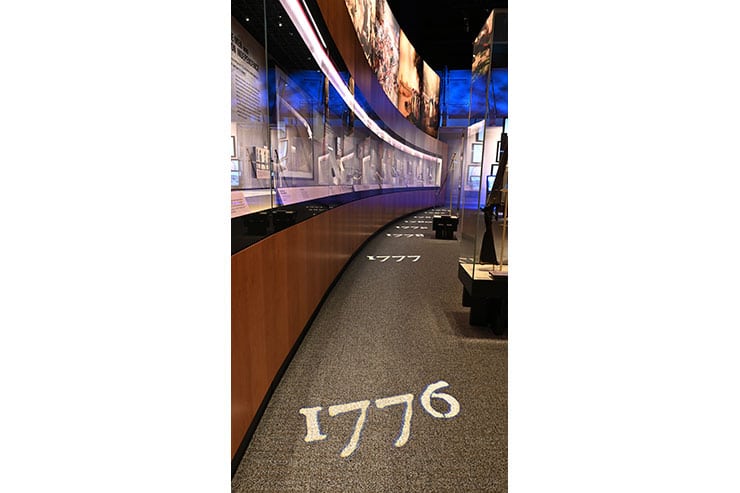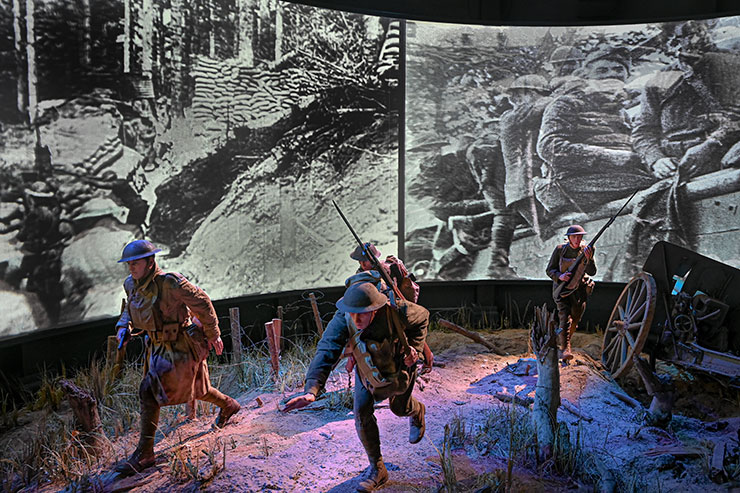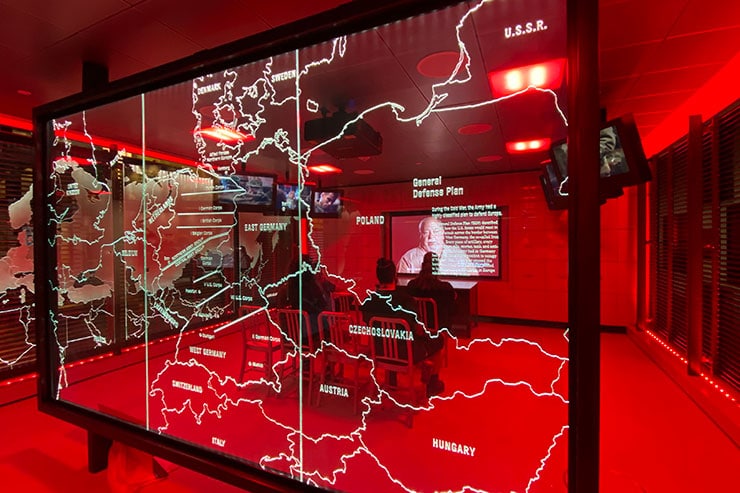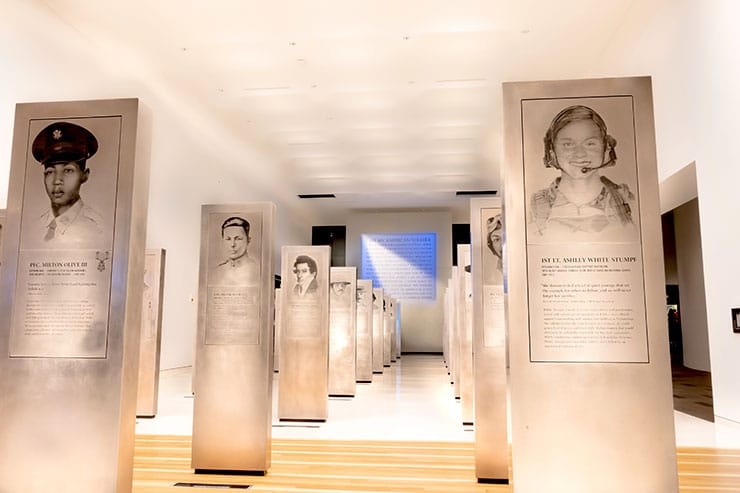- ABOUT
- JUDGING
- CONTACT
- MORE
- 2024 Entries
- Installations 2024
- Past Winners
- Subscribe
- [d]arc directory
- arc magazine
- darc magazine
National Museum of the United States Army, USA
ProjectNational Museum of the United States Army - Museum Exhibition LightingLocationFort Belvoir, Virginia, USALighting DesignAvailable Light, USAArchitectSkidmore, Owings & Merrill, USAAdditional DesignChristopher Chadbourne & Associates, Exhibit Design Eisterhold Associates, Exhibit Design Design + Production, Exhibit FabricatorClientEisterhold AssociatesLighting SuppliersETC, Finelite, Gantom, Interactive Technologies, Jesco Lighting Group, Lighting Services, Luxam, Prolume, Pure Lighting, Rosco, Special FX PhotographyAvailable Light
The National Museum of the United States Army at Ft. Belvoir, Virginia tells the story of more than 245 years of history. Much of the information throughout the exhibits is relayed through the eyes of American soldiers. From macro-scale artifacts to immersive media presentations, the museum required sophisticated and dramatic lighting across its 45,000sqft of exhibits.
Embracing the enormous scale of the visitor experience meant developing lighting systems that would be robust and easy to maintain. The story begins in 1775 with the establishment of the Army; the story unfolds in linear fashion through to modern times and its current role in American society.
Nine galleries, each representing a critical juncture in the Army’s development, are accessed via commonly designed entry portals off a 300ft-long media and lighting-rich connecting Concourse. Serving as an ethereal invitation, light pours out of each gallery portal into the Concourse.
Three distinct mounting positions were employed: first, with 27’ tall “black box” spaces, it was clear that workhorse luminaires would need to be high-powered, narrow beam distribution framing projectors to spotlight specific details. Second, a combo custom-curved track/masking housing was built to stand-off large gallery walls allowing consistent lighting of both graphics and artifacts. Third, the dozens of artifact cases housing delicate artifacts are illuminated with an integral system of fiber optic-driven spotlights clamped to rods. This strategy was crucial to developing a hierarchy of light helping visitors to understand and circulate.
A fluid and continuous gallery-to-gallery immersive theatrical environment was conceived with the concourse as both connector and decompression space. Inspired by theatrical convention, the lighting team worked to let corners of the various spaces recede, allowing the experience to emerge from darkness.
For continuity, clarity, and orientation some elements (i.e., lighting graphics) are consistent from gallery-to-gallery. Each gallery has a myriad of historic stories to tell, deploying artifacts, dramatic tableaus with cast figures, macro-scale artifacts, synchronised A/V presentations, etc. and help tell the story of how events shaped a nation.
Applying a myriad of layers of light to craft the visual environment: from brushstrokes of light on graphic panels to hundreds of theatrical accents, the lighting designers sought to deliver a vibrant and dynamic experience transporting visitors through time and place.
Design for the project began in 2008; with tall spaces, theatrical framing projectors employing CMH lamps was the light engine of choice. But, over the almost 13-year design/installation span, the LED Revolution occurred. Fortunately, there was time for the lighting team to study the implications, challenges, and benefits of transitioning to this radically new technology. An exhaustive cost-benefit analysis was performed and presented to the stakeholders for their consideration. To the owners’ credit, they decided that transitioning away from what was soon to be an obsolete technology was the right choice. A tight budget was forced to expand as nearly every fixture in the specification was re-specified with LED at its heart but payback in energy savings and maintenance will occur over time. The results deliver a stunning visitor experience.
